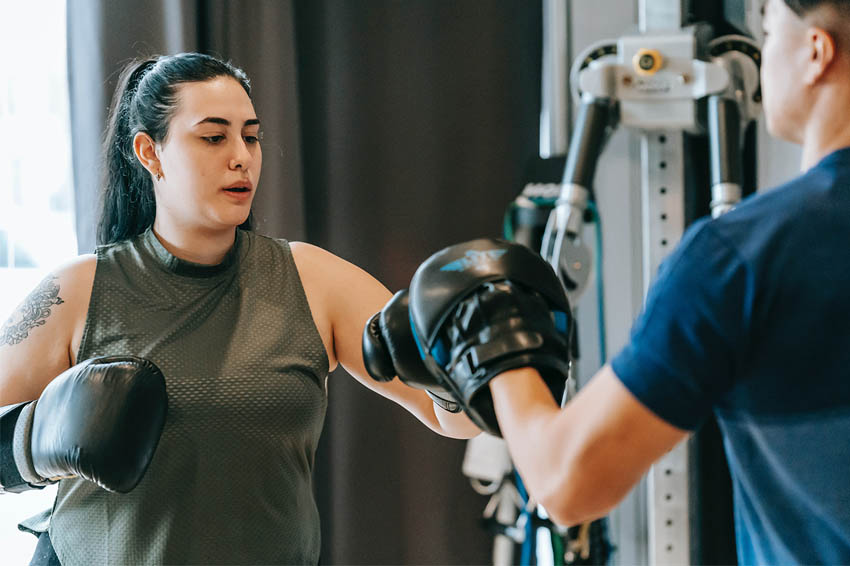How many times have you started a new movement or exercise practice and promised yourself that this time, it was going to stick?
I know I’ve done this time and again, and I’m a personal trainer!
Maybe you made a resolution to work out three times a week, or you purchased an app with a habit tracker to keep you accountable, or you invested in an expensive piece of equipment thinking that its cost (in money and space) would guilt-trip you into showing up to use it.
These approaches may get you started, but creating a new practice that you stick with for the long haul means creating a lasting change in your life. Here are 10 tips to help you make that change and create a movement practice that lasts.
1. Know why you’re showing up
Whether you call it keeping your eye on the prize, pursuing your “why,” or looking at the big picture, knowing what motivated you to start a movement practice will help you keep showing up for it.
Here’s an example: I’m motivated to show up to work out for a variety of reasons. Some of my motivators are intrinsic, in that they are inherent to the activity itself (the practice is grounding or joyful), and others are extrinsic, in that doing the activity supports a goal that’s separate from the activity (such as managing chronic pain or being able to carry the groceries home).
Both kinds of motivators help us show up.
2. Accept that creating a practice requires change
No matter your “why,” creating a practice that lasts means creating change. This might be a change in your schedule, your relationship with your body, your priorities, or some combination thereof.
Whatever the change, it’s helpful to acknowledge that you’ll benefit from it, even if you feel some ambivalence.
3. Put conditions in place
Before you jump in, create a plan. Do some research and self-exploration. Be thoughtful and pick an activity you’re more likely to stick with, and then put the conditions in place that will help you engage in your practice.
This might include shifting your schedule, buying needed equipment or a studio membership, setting up your habit tracker, or finding an accountability buddy (see Tip 6).
4. Remember it’s a process
You don’t just wake up one day and have a practice. A practice is something that occurs over time, and part of the practice is showing up again and again. It’s a process.
The good news? If you’re reading this, you’re already engaging in the process: you’re contemplating a practice. Maybe you’ve already done some planning and have put things in place, or perhaps you’ve even begun to show up.
5. Show up for yourself
Show up. Because once you show up to practice, you’re practicing! Take time to acknowledge that this is a big deal. You’re implementing the plan you created for yourself.
6. Foster social support
Support from a person—either a movement buddy, a coach, a counselor, or a supportive friend who likes to hear about your small successes—can be highly beneficial. Humans are social creatures; having social support helps us.
A support network is a positive way to feel a sense of accountability. It doesn’t mean you have to toss the habit tracker, though!
7. Have realistic expectations
Expect to move toward your goals. But also expect to struggle with some new things and possibly not like every moment. Be prepared to have good days and bad days and for your progress to be nonlinear.
8. Be willing to change course
Life happens. Understand that at some point, you might have to hit pause when illness or other life circumstances render you unable to practice for days or even weeks. It might be frustrating, but it’s okay.
Your practice will be waiting for you when you return. All your progress won’t be lost; it can be regained with more ease than the first time around.
9. Celebrate your growth
Have a way to measure every bit of progress you make so that when you feel like you aren’t making any, you can look at your record of achievements. I urge my clients to track their work every day: every exercise, every rep, and every weight lifted.
If your activity is hard to track with metrics, take a couple of minutes post-movement to note how you were feeling before and after your practice, what was easier for you this time, and what’s still challenging.
Like sharing small successes with a loved one, this, too, creates the opportunity to observe incremental progress as it happens.
10. Have clear goals
Have clear goals so you can remind yourself why you’re doing this. Goals are specific, measurable, achievable, and time-bound expressions of your “why” from Tip 1. For example, if your reason for showing up is to mitigate back pain, a goal might be to go a week pain-free, then a month, and so on.
Adhering to a new movement practice long enough for it to become a set part of your routine takes planning, effort, and patience. Self-compassion and encouragement from loved ones will provide support, too.
Good luck, and remember: just by showing up, you’re engaging in your practice!
Image Credit: Pexels

Laura Khoudari is a trauma practitioner, certified personal trainer, and corrective exercise specialist. Widely recognized within the trauma and fitness communities, she is passionate about giving people the tools they need to heal from trauma and cultivate wellness. She is the author of Lifting Heavy Things: Healing Trauma One Rep at a Time. Learn more at laurakhoudari.com.





































